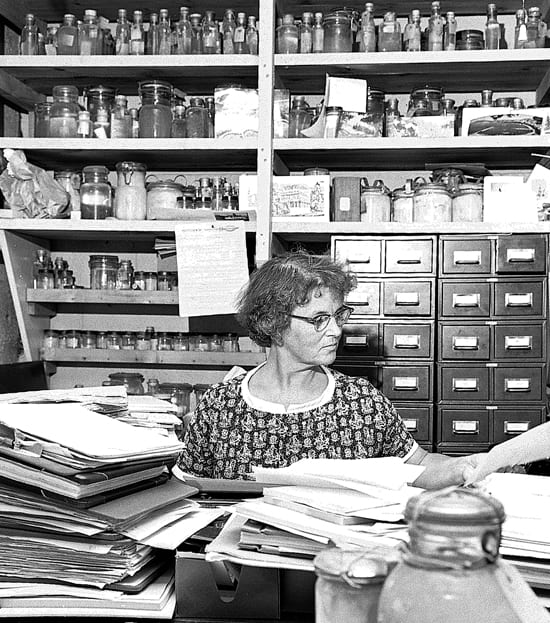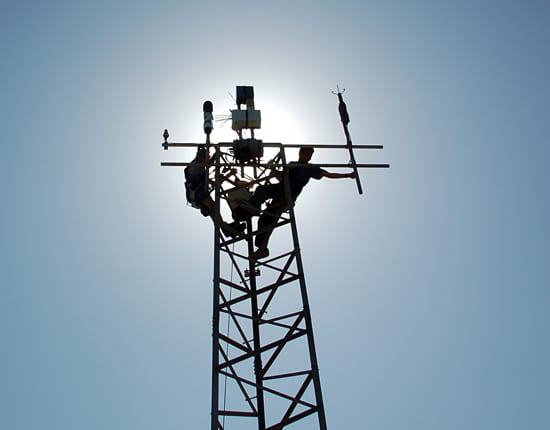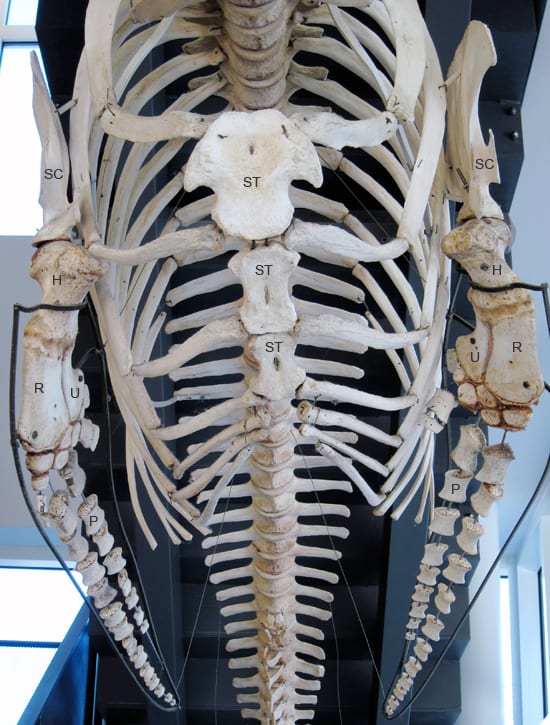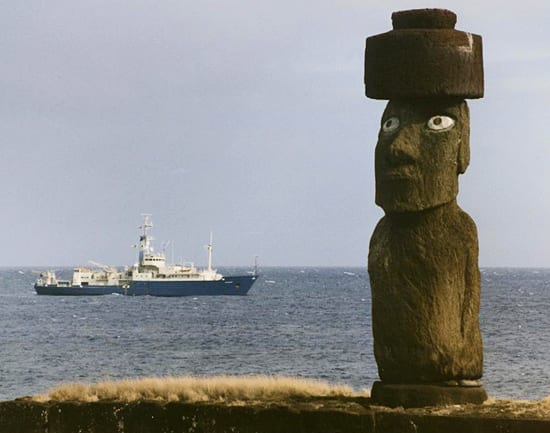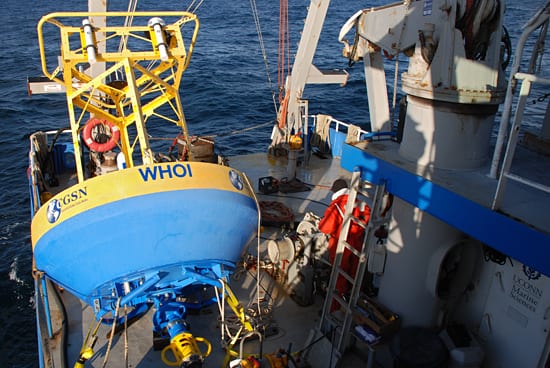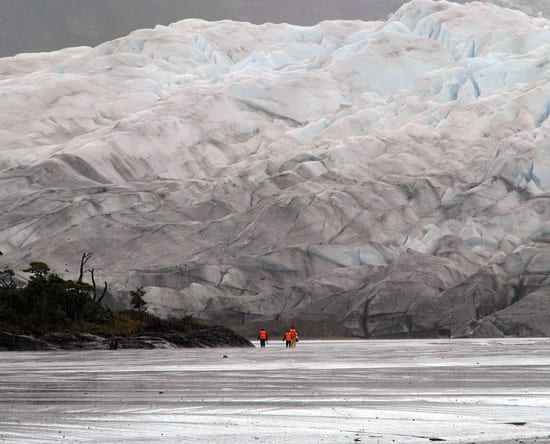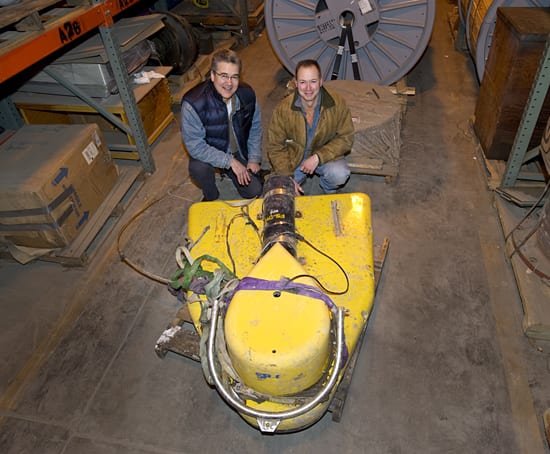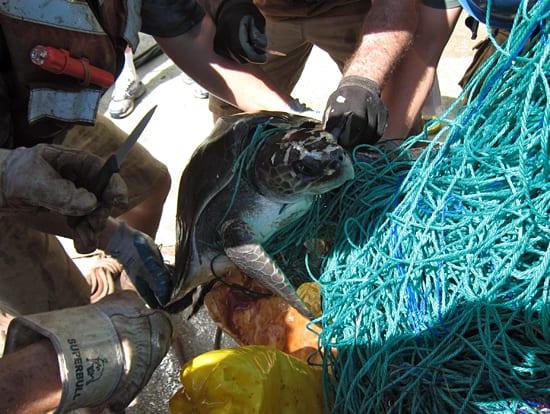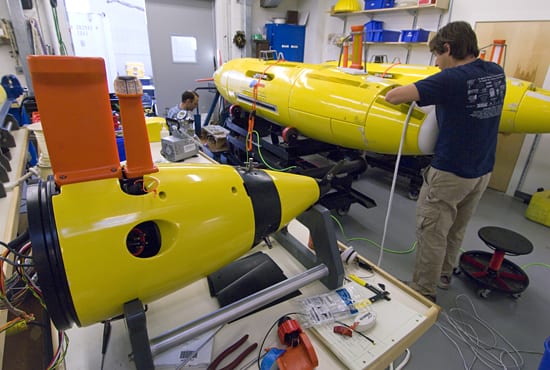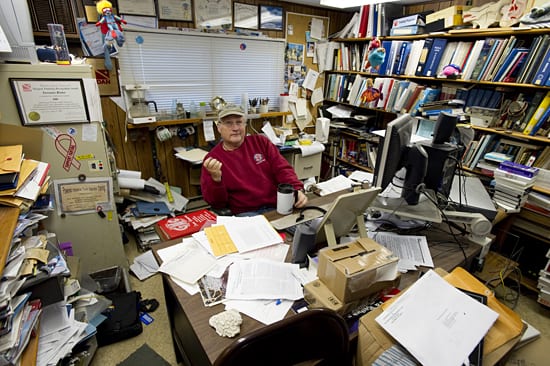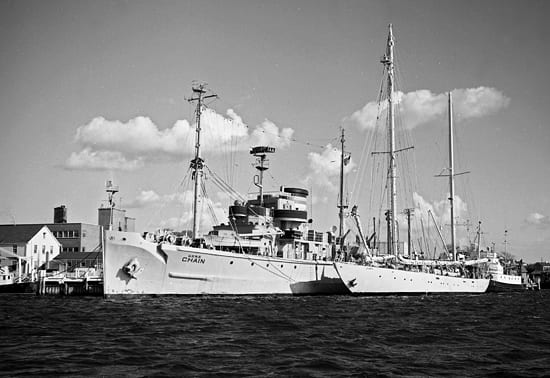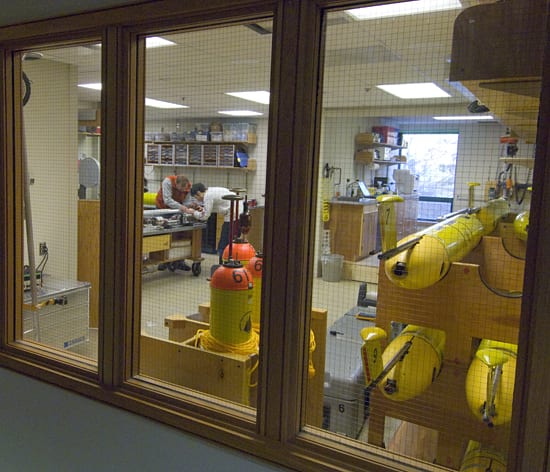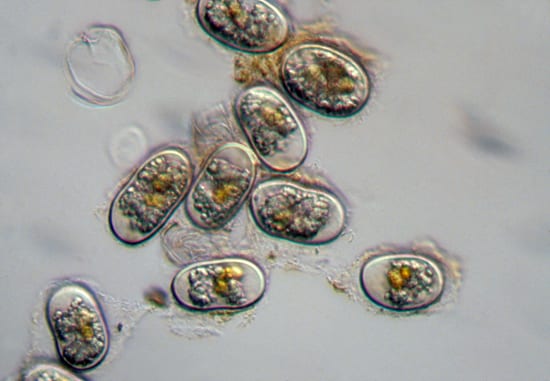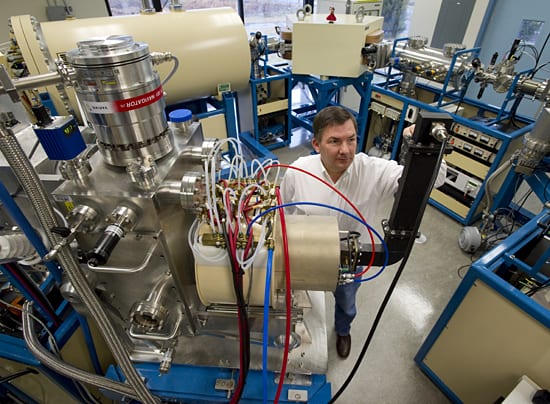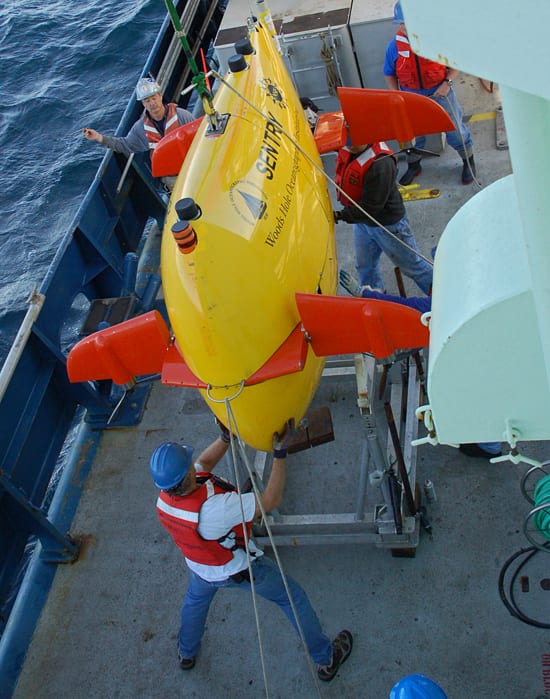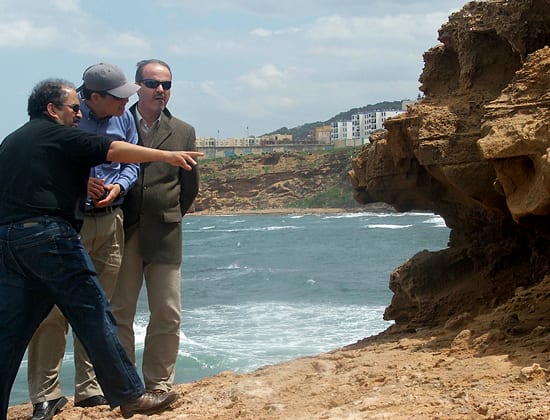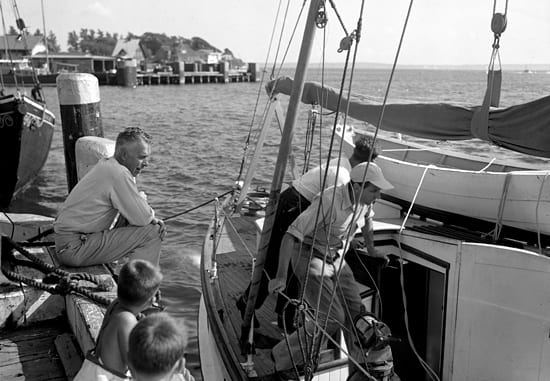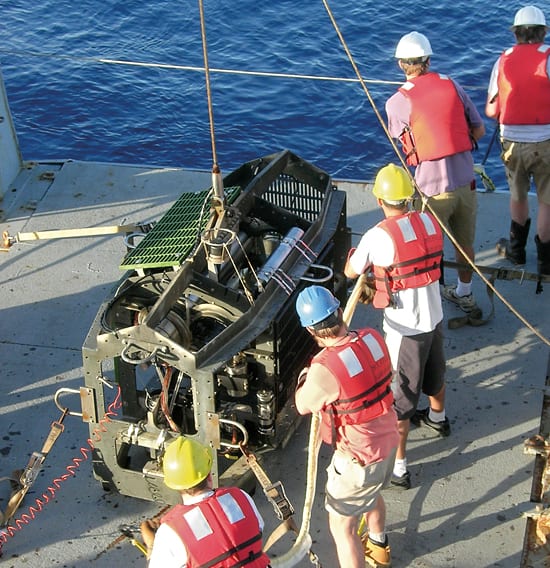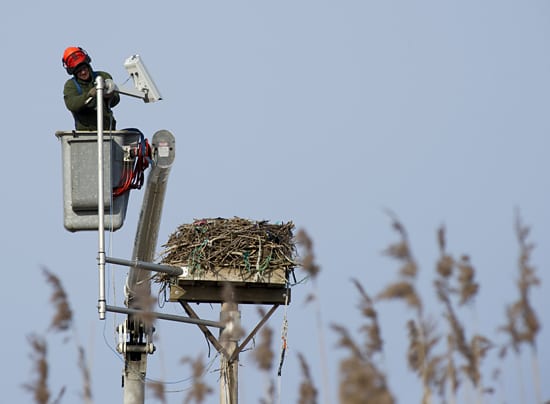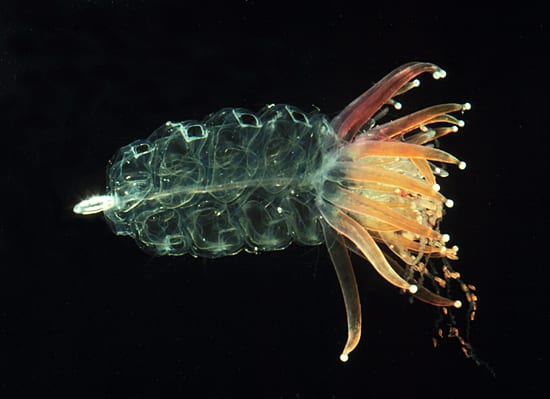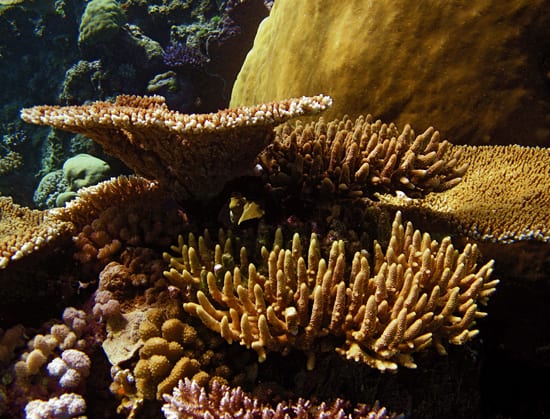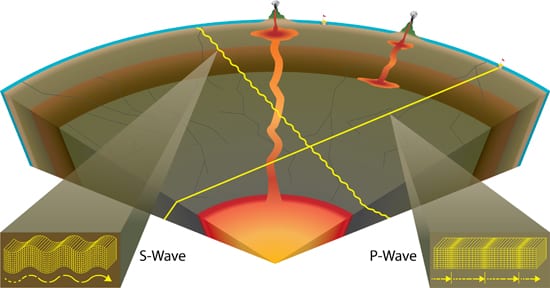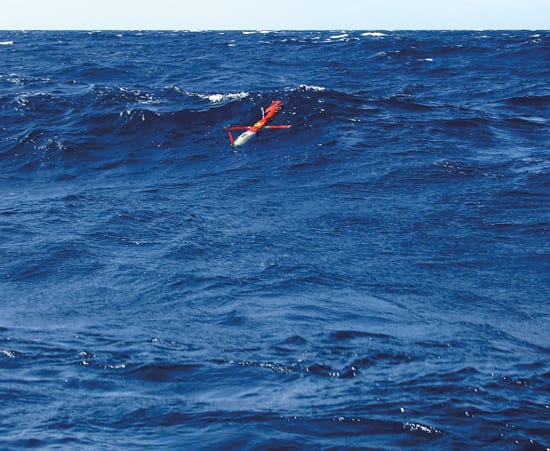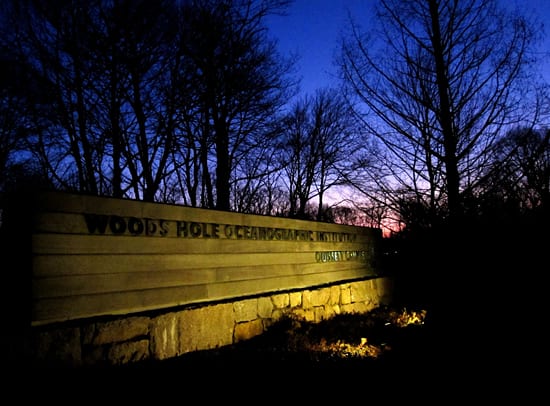Multimedia Items
Woman Pioneer
In this 1960 photo, Mary Sears is surrounded by papers and biological samples in her Bigelow Laboratory office. Sears was the first recipient of the original Woman Pioneer in Oceanography…
Read MoreHigh-profile job
With the hot Saudi sun behind them during a 12-hour job, WHOI’s Paul Bouchard (left) and Tom Farrar replace instruments on a 10-meter-high meteorological tower on the campus of King…
Read MoreBones about it
The skeleton of a pilot whale (Globicephala melaena) hangs in the lower-level foyer of the Marine Research Facility on the Quissett campus of Woods Hole Oceanographic Institution (WHOI). The whale…
Read MoreEaster Island
The research vessel Knorr shown anchored off the port of Hanga Roa, Rapa Nui (Easter Island) during an expedition in May 1992. R/V Knorr is probably best known as the…
Read MoreTest buoy deployed
The Electro-Optical-Mechanical (EOM) test buoy for the Ocean Observatories Initiative (OOI), stowed on the fantail of the R/V Connecticut, was deployed in January on a mooring in 152 meters of…
Read MoreSediment sampling
A team of researchers led by Sebastien Bertrand, of the WHOI Marine Chemistry and Geochemistry department, took sediment samples during five weeks of field work in the fjords of Chilean…
Read MoreLost and found
This towbody that houses an advanced broadband acoustic echosounder was lost in waters east of Provincetown in October, 2006 during a routine calibration off of the R/V Tioga. WHOI Senior…
Read MoreTurtle rescue
The R/V Atlantis crew was working off the Galapagos Islands with the human occupied submersible Alvin, when Captain AD Coburn noticed a yellow object floating approximately 1000 meters off in…
Read MoreReadying REMUS
Brennan Phillips (right) and Greg Packard (background) work on two Remote Environmental Monitoring UnitS — or REMUS vehicles — in the Ocean Systems Laboratory at WHOI. Three REMUS 6000 vehicles…
Read MoreEverything in its place?
Diving safety officer Terry Rioux (shown here in his office) is responsible for all day-to-day aspects of scuba diving at Woods Hole Oceanographic Institution (WHOI), including review and enforcement of…
Read MoreChain and the A-boat
Woods Hole Oceanographic Institution (WHOI) research vessels Chain and Atlantis at the WHOI dock in 1958. Atlantis was the first WHOI research vessel and the first ship built specifically for…
Read MorePrepping a glider
John Lund, left, and Ben Hodges work in the glider lab on a Spray glider, an autonomous underwater vehicle, or AUV. The Spray glider—about six and a half feet long…
Read MoreCyst survey
Harmful algal bloom (HAB) cells shown under a microscope. WHOI scientists issued an outlook for a significant regional bloom of a toxic alga that can cause ‘red tides’ in the…
Read MoreFlowing stream
Mark Roberts works on the gas ion source of the Continuous Flow Accelerator Mass Spectrometer (CFAMS), a Carbon 14 measurement system at WHOI. CFAMS was designed specifically for the continuous…
Read MoreMore autonomy
WHOI’s new deep-diving autonomous underwater vehicle Sentry was launched from the research vessel Atlantis off the coast of Santa Barbara, Calif., in September 2009 to search for cold seeps—naturally occurring…
Read MoreAlgerian quake clues
Senior Scientist Jian Lin (in blue shirt) and colleagues examine geological evidence of past earthquakes near the Mediterranean coast of Algeria. A study of the interplay of stresses surrounding a…
Read MoreWhere currents converge
Columbus O’Donnell Iselin, the second director of the Woods Hole Oceanographic Institution, sees Edmund Watson and others off on a 1950 Gulf Stream cruise aboard a boat called Seal. Iselin,…
Read MoreSidekick
Engineers in the Deep Submergence Laboratory at WHOI designed the remotely operated vehicle Jason II and its sidekick Medea —shown here on the fantail of a ship— for scientific study…
Read MoreReady for spring!
John Lovett, from W.S. Schultz Co., removes the old camera above the osprey nest located on the WHOI Quissett Campus in early March. A new camera was installed in preparation…
Read MorePhysophora hydrostatica
Physophora hydrostatica, a siphonophore, is made up of multiple units, each specialized for a function like swimming, feeding, or reproduction. This “modular” construction allows some siphonophores to grow very large…
Read MoreResearch on the reefs
Coral reefs are among the most diverse, productive ecosystems on Earth, but they are also among the most threatened. Fragile reefs are particularly sensitive to environmental changes, such as warming…
Read MorePS: Earthquakes generate waves
Earthquakes, including the recent major quakes in Chile and Haiti, release energy that radiates two kinds of seismic waves: compression waves (P waves) and shear waves (S waves). P waves…
Read MoreGlide surfing
A Spray Glider climbs a wave on the sea surface. The gliders, which are robotic submarines that navigate underwater without a human crew onboard and without cables connecting them to…
Read MoreA new dawn
A February 2010 sunrise illuminates the entrance to the Woods Hole Oceanographic Institution (WHOI) Quissett campus. WHOI received funding earlier this year for a new addition to the campus —…
Read More
